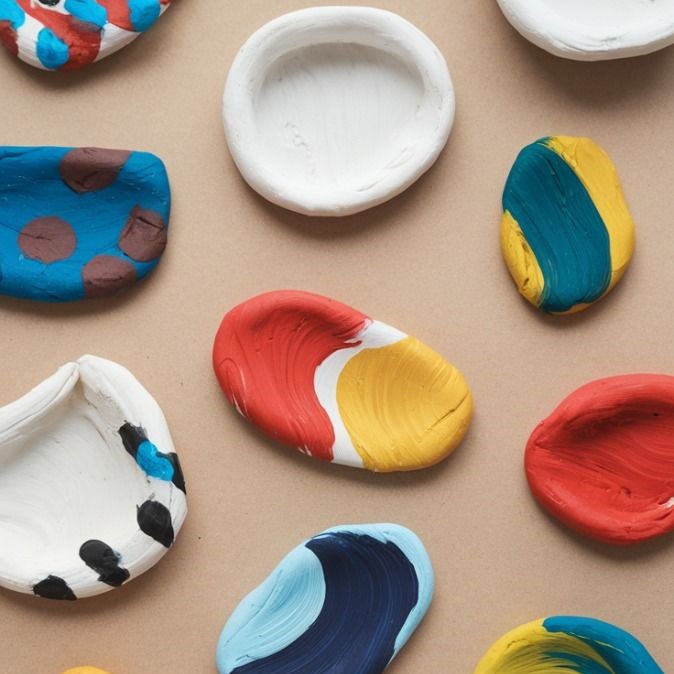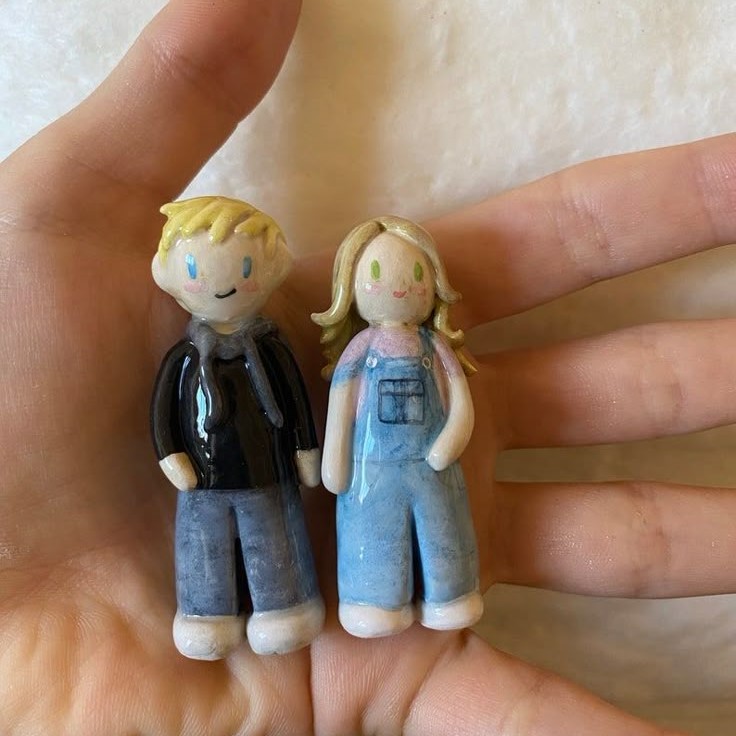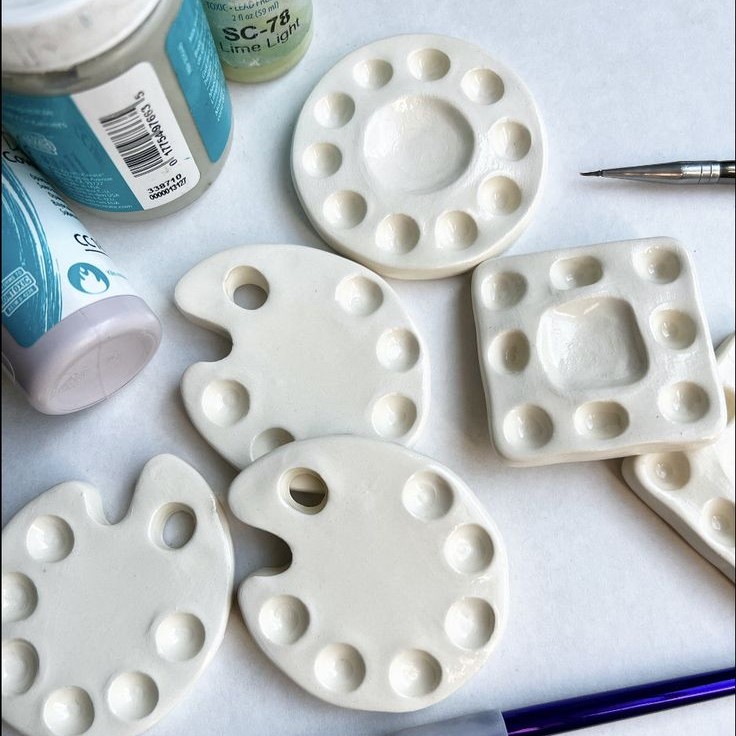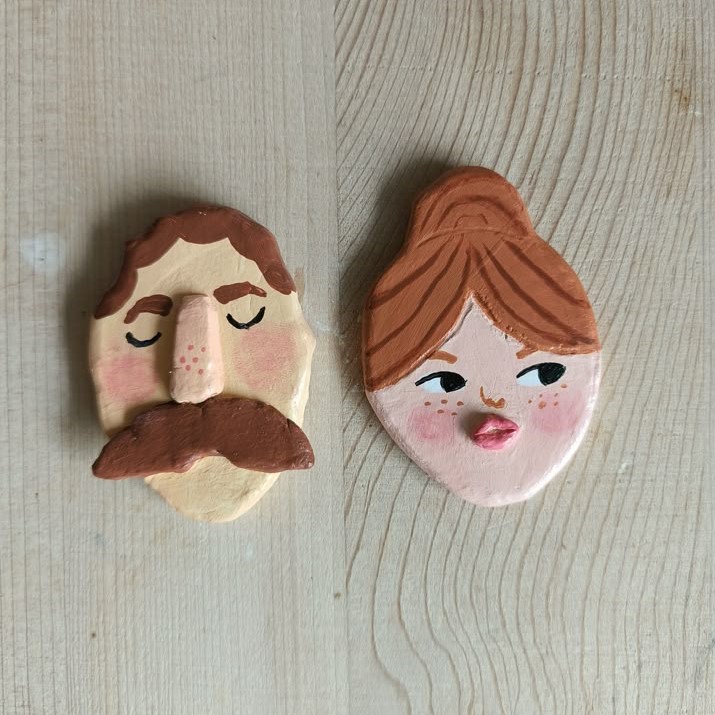Introduction: The Basics of Baking Modeling Clay
When crafting with clay, a common question arises: “Can you bake modeling clay?” Many artists and crafters are eager to know whether baking enhances their creations and makes them more durable. While the answer isn’t as straightforward as one might hope, understanding the nuances of various types of modeling clay will make a significant difference in your crafting experience. In this article, we will explore the baking capabilities of modeling clay, the different types available, the baking process, and practical tips to help you achieve successful craft projects.

A proper grasp of these concepts will guide you through ensuring that your time spent creating with clay results in lasting, beautiful works of art. So, let’s dive into the world of modeling clay and uncover the answer to whether or not you can bake it!
Types of Modeling Clay: Which Can Be Baked?
To address the question of baking, it’s essential to differentiate between the types of modeling clay available on the market. Each type has distinct properties and intended uses, so knowing which one is suitable for baking is critical.
1. Polymer Clay
- Definition: Polymer clay is a synthetic modeling clay that remains soft until baked in an oven. It’s made from PVC (polyvinyl chloride) and can be hardened through heat.
- Baking Properties: This type of clay can be baked at a temperature typically ranging from 265°F to 275°F (129°C to 135°C). After baking, it becomes durable and can be used for various applications like jewelry, figurines, and decorations.
- Popular Brands: Some well-known brands of polymer clay include Sculpey, Fimo, and Premo, each offering various colors, finishes, and textures.
2. Air-Dry Clay
- Definition: Air-dry clay is designed to harden when exposed to air, requiring no baking at all. It is typically composed of natural, non-toxic materials.
- Properties: While this type of clay is user-friendly and ideal for projects that don’t require durability, it does not achieve the same hardness or longevity as baked clay. It is perfect for making temporary decor or simple sculptures.
- Limitations: Because it is softer and less durable than baked clay, air-dry clay is less suitable for items that experience frequent handling or stress.
3. Oven-Bake Clay
Definition
- What is Oven-Bake Clay? Oven-bake clay is a versatile modeling material that is often compared to polymer clay due to its similar properties and usage. It is a synthetic material designed for crafting and sculpting, which can be shaped and molded easily before being hardened through baking.
- Baking Process: The primary method of hardening oven-bake clay is by placing it in a conventional kitchen oven. The heat causes chemical reactions within the clay, resulting in a solid, durable structure that retains its shape after cooling. This feature makes it suitable for a wide array of artistic and functional projects.
- Differences from Air-Dry Clay: Unlike air-dry clay, which hardens naturally over time without heat, oven-bake clay requires precise baking to achieve its final form. This distinction affects the versatility and application of each type of clay in crafting projects.
Baking Properties
- Specific Instructions Required: Proper baking of oven-bake clay requires following specific instructions provided by the manufacturer. Guidelines typically include recommended baking times and appropriate temperatures depending on the thickness and type of clay being used. Adhering closely to these instructions is essential for achieving the desired hardness and durability of the finished piece.
- Risk of Overbaking: Overbaking oven-bake clay can lead to undesirable results, such as burning or discoloration. It can also cause the surface to become too hard or brittle. Understanding the right baking parameters ensures that your creations maintain their intended quality and aesthetics.
- Impact of Underbaking: Conversely, underbaking can prevent the clay from curing properly, leading to a soft or flexible structure. Pieces that are not adequately baked may not hold their shape and can break easily. Therefore, keeping track of time and temperature is crucial for success when using oven-bake clay.
- Cooling Time: After baking, allow the clay to cool completely before handling or applying any additional finishes, such as paints or glazes. This cooling period solidifies the material and ensures that it has reached its final state. Awareness of these baking properties helps crafters avoid common pitfalls associated with curing oven-bake clay.
Characteristics
- Variety of Colors: Typical brands of oven-bake clay offer an extensive range of colors, including primary shades, metallic finishes, and even translucent varieties. The wide selection allows artists and crafters to create vibrant and visually engaging projects. This diversity in color fosters creativity and encourages experimentation with color mixing to achieve unique shades.
- Intricate Detailing Capabilities: Like polymer clay, oven-bake clay is highly malleable, making it ideal for sculpting intricate details. Artists can create fine features, textures, and complex designs that showcase their skill and creativity. The flexibility of the material during sculpting enables the replication of realistic shapes and decorative elements.
- Durability After Baking: Once properly baked, oven-bake clay becomes a durable and long-lasting material suitable for various applications, including jewelry making, home décor, and model crafting. The end result is a solid structure that can withstand handling and display without significant wear.
- Compatibility with Other Materials: Oven-bake clay can often be used in conjunction with other materials, such as wires, beads, or armatures, to enhance structural integrity or add mixed media elements to projects. This compatibility allows crafters to combine techniques and materials, resulting in diverse artistic expressions.
- Finishing Options: After the clay has been baked and cooled, it can be painted, sanded, or polished to achieve desired finishes. Applying glazes or sealing products can enhance the final look and add protective layers to the finished pieces. This versatility in finishing options allows for further exploration of artistic techniques and personalization.
The Baking Process: Step-by-Step Guide
Can you bake modeling clay? If you are using polymer or oven-bake clay, understanding the baking process is essential for achieving the best results. Here’s a detailed guide to successfully baking modeling clay:
1. Preparation
- Select Your Clay: Choose a type of modeling clay that can be baked, confirming whether it is polymer clay or oven-bake clay. Always consult the packaging for specific guidelines.
- Gather Your Tools: You will need your chosen clay, a clean work surface, an oven-safe baking sheet, parchment paper, and possibly sculpting and cutting tools.
2. Sculpt Your Creation
- Work on a Clean Surface: Start your project by preparing a smooth, clean surface. This makes it easier to shape the clay without interference from dust or other materials.
- Shape and Design: Begin by flattening or sculpting your clay into the desired shape. Use tools like clay knives or rolling pins to create smooth, even designs. Consider making pieces of uniform thickness to ensure even baking.
3. Baking the Clay
- Preheat the Oven: Before placing the clay in the oven, preheat it to the recommended temperature mentioned on the packaging. Following manufacturer instructions is crucial for achieving the best results.
- line the Baking Sheet: Use parchment paper to line your baking sheet. This step prevents sticking and simplifies cleanup after baking.
- Bake: Place your clay creation on the lined baking sheet and bake according to the specified time. This usually ranges from 15 to 30 minutes, depending on the size and thickness of your piece.
4. Cooling the Clay
- Let It Cool: After the baking time is completed, turn off the oven but leave the creation inside. Allow it to cool gradually. This process minimizes the risk of cracks due to sudden temperature changes.
- Inspect Your Creation: Once cooled, examine if it meets your desired outcome. You can enhance the appearance by sanding, painting, or glossing over the baked piece.
Tips for Successful Baking
To make your baking experience as successful as possible, keep these essential tips in mind:
1. Follow the Instructions
Always read the instructions provided with the clay. They detail the specific temperature and baking time, which are crucial for achieving desired results.
2. Monitor Baking Time
Baking too long may lead to browning or burning, while underbaking can leave your piece soft. Set a timer and remain vigilant.
3. Quality Matters
Choose high-quality polymer or oven-bake clay from reputable brands. This can make a significant difference in the final product’s durability and appearance.
4. Ventilated Area
Ensure your crafting area is well-ventilated, especially during baking. This helps dissipate any fumes that might be released from the clay.
5. Experiment with Techniques
Don’t hesitate to try different techniques. Every project can present unique challenges and opportunities to learn, and experimentation can lead to the most stunning results.
Safety Considerations
When engaging in baking and crafting activities, safety should always be a priority, particularly when children are involved. Here are essential safety considerations:
1. Supervision is Essential
If children are crafting and baking, ensure adult supervision at all times. This reduces the risk of accidents in the kitchen and promotes a safe working environment.
2. Non-Toxic Assurance
While polymer clay is generally safe when used as instructed, it is important to teach kids the importance of not ingesting any crafting materials. Clear guidelines about handling should be provided.
3. Use Protective Gear
Consider using gloves and aprons while working with clay, especially during techniques like mixing or kneading. This keeps both hands and clothing free from clay residue.
Creative Project Ideas Using Baked Modeling Clay
Once you understand the baking process, it’s time to consider various creative projects to undertake with your baked modeling clay. Here are several ideas to spark your imagination:
1. Custom Jewelry
Create unique necklaces, bracelets, or earrings using baked clay. Use cookie cutters to shape your pieces, and consider using paint or varnish to add finishing touches. Not only is this a fun activity, but it also results in tailor-made accessories that you can wear or gift.
2. Miniature Models
Craft intricate miniature models of buildings, vehicles, or fantasy characters. Baking the clay ensures that your creations are stable and durable, making them perfect for display.
3. Home Decor Items
Design decorative items such as coasters, wall art, or figurines. Baked modeling clay can be painted or embellished after curing, allowing you to create bespoke decor that reflects your style.
4. Seasonal Decorations
Create holiday-themed decorations, such as ornaments for Christmas or spooky figures for Halloween. Baked clay is ideal for these projects, as it can withstand the test of time and be used year after year.
5. Functional Items
Consider making items like picture frames, key holders, or small trays. The durability achieved through the baking process ensures these functional pieces hold up well to everyday use.
Conclusion: Can You Bake Modeling Clay?
In conclusion, the answer to the question, “Can you bake modeling clay?” is indeed yes, but it comes with stipulations. Only certain types, mainly polymer and oven-bake clay, can be baked to achieve a hardened result. These options provide fantastic creative opportunities for crafting functional items and artistic creations.

By grasping how to work with polymer or oven-bake clay, understanding the proper baking techniques, and following critical safety guidelines, you will enhance your crafting experience. Whether you are fashioning unique jewelry, decorative models, or seasonal ornaments, the world of baked modeling clay opens vast creative potentials.
Embrace your creativity, explore the many possibilities, and enjoy the process of making art with baked modeling clay. Your adventures in crafting are just beginning, and the skills you acquire will serve you well in all future projects!


